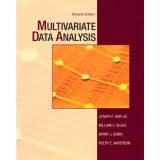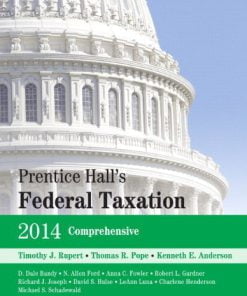Managing Human Resources 8th Edition Gomez-Mejia Solutions Manual
$35.00 Original price was: $35.00.$26.50Current price is: $26.50.
Managing Human Resources 8th Edition Gomez-Mejia Solutions Manual
This is completed downloadable of Managing Human Resources 8th Edition Gomez-Mejia Solutions Manual
Product Details:
- ISBN-10 : 0133029697
- ISBN-13 : 978-0133029697
- Author: Gomez-Mejia
Managing Human Resources gives future managers a solid business understanding of human resource management skills. The approach used in this text makes human resources relevant to anyone who has to deal with HR issues in the workplace, even those who do not hold the title of manager. The Eighth Edition is updated to include new introductory vignettes, new case studies, and a focus on emerging trends in HR.
Table of Content:
- PART I Introduction
- CHAPTER 1 Meeting Present and Emerging Strategic Human Resource Challenges
- CHALLENGES
- Human Resource Management: The Challenges
- Environmental Challenges
- Rapid Change
- The Internet Revolution
- Workforce Diversity
- Globalization
- Legislation
- Evolving Work and Family Roles
- Skill Shortages and the Rise of the Service Sector
- Natural Disasters and Terrorism
- Organizational Challenges
- Competitive Position: Cost, Quality, or Distinctive Capabilities
- Decentralization
- Downsizing
- Organizational Restructuring
- Self-Managed Work Teams
- The Growth of Small Businesses
- Organizational Culture
- Technology
- Internal Security
- Data Security
- Outsourcing
- Product Integrity
- Individual Challenges
- Matching People and Organizations
- Ethics and Social Responsibility
- Productivity
- Empowerment
- Brain Drain
- Job Insecurity
- Planning and Implementing Strategic HR Policies
- The Benefits of Strategic HR Planning
- Encouragement of Proactive Rather than Reactive Behavior
- Explicit Communication of Company Goals
- Stimulation of Critical Thinking and Ongoing Examination of Assumptions
- Identification of Gaps between Current Situation and Future Vision
- Encouragement of Line Managers’ Participation
- Identification of HR Constraints and Opportunities
- Creation of Common Bonds
- The Challenges of Strategic HR Planning
- Maintaining a Competitive Advantage
- Reinforcing Overall Business Strategy
- Avoiding Excessive Concentration on Day-to-Day Problems
- Developing HR Strategies Suited to Unique Organizational Features
- Coping with the Environment
- Securing Management Commitment
- Translating the Strategic Plan into Action
- Combining Intended and Emergent Strategies
- Accommodating Change
- Strategic HR Choices
- Work Flows
- Staffing
- Employee Separations
- Performance Appraisal
- Training and Career Development
- Compensation
- Employee and Labor Relations
- Employee Rights
- International Management
- Selecting HR Strategies to Increase Firm Performance
- Fit with Organizational Strategies
- Corporate Strategies
- Porter’s Business Unit Strategies
- Miles and Snow’s Business Strategies
- Fit with the Environment
- Fit with Organizational Characteristics
- The Production Process for Converting Inputs into Output
- The Firm’s Market Posture
- The Firm’s Overall Managerial Philosophy
- The Firm’s Organizational Structure
- The Firm’s Organizational Culture
- Fit with Organizational Capabilities
- Choosing Consistent and Appropriate HR Tactics to Implement HR Strategies
- HR Best Practices
- The HR Department and Managers: An Important Partnership
- Specialization in Human Resource Management
- Summary and Conclusions
- Human Resource Management: The Challenges
- Planning and Implementing Strategic HR Policies
- Selecting HR Strategies to Increase Firm Performance
- The HR Department and Managers: An Important Partnership
- Key Terms
- Discussion Questions
- References
- PART II The Contexts of Human Resource Management
- CHAPTER 2 Managing Work Flows and Conducting Job Analysis
- CHALLENGES
- Work: The Organizational Perspective
- Strategy and Organizational Structure
- Designing the Organization
- Bureaucratic Organization
- Flat Organization
- Boundaryless Organization
- Work-Flow Analysis
- Business Process Reengineering
- Work: The Group Perspective
- Self-Managed Teams
- Other Types of Teams
- Work: The Individual Perspective
- Motivating Employees
- Two-Factor Theory
- Work Adjustment Theory
- Goal-Setting Theory
- Job Characteristics Theory
- Designing Jobs and Conducting Job Analysis
- Job Design
- Work Simplification
- Job Enlargement and Job Rotation
- Job Enrichment
- Team-Based Job Designs
- Job Analysis
- Who Performs Job Analysis?
- Methods of Gathering Job Information
- The Uses of Job Analysis
- The Techniques of Job Analysis
- Task Inventory Analysis
- Critical Incident Technique
- Position Analysis Questionnaire (PAQ)
- Functional Job Analysis
- Job Analysis and the Legal Environment
- Job Analysis and Organizational Flexibility
- Job Descriptions
- Elements of a Job Description
- Identification Information
- Job Summary
- Job Duties and Responsibilities
- Job Specifications and Minimum Qualifications
- Job or Work?
- The Flexible Workforce
- Contingent Workers
- Temporary Employees
- Part-Time Employees
- Outsourcing/Subcontracting
- Outsourcing Advantages
- Outsourcing Disadvantages
- Offshore Outsourcing
- Contract Workers
- College Interns
- Flexible Work Schedules
- Flexible Work Hours
- Compressed Workweeks
- Telecommuting
- The Mobile Workplace
- Human Resource Information Systems
- HRIS Applications
- HRIS Security and Privacy
- Summary and Conclusions
- Work: The Organizational Perspective
- Work: The Group Perspective
- Work: The Individual Perspective
- Designing Jobs and Conducting Job Analysis
- The Flexible Workforce
- Human Resource Information Systems
- Key Terms
- Discussion Questions
- CHAPTER 3 Understanding Equal Opportunity and the Legal Environment
- CHALLENGES
- Why Understanding the Legal Environment Is Important
- Doing the Right Thing
- Realizing the Limitations of the HR and Legal Departments
- Limiting Potential Liability
- Challenges to Legal Compliance
- A Dynamic Legal Landscape
- The Complexity of Laws
- Conflicting Strategies for Fair Employment
- Unintended Consequences
- Equal Employment Opportunity Laws
- The Equal Pay Act of 1963
- Title VII of the Civil Rights Act of 1964
- General Provisions
- Discrimination Defined
- Defense of Discrimination Charges
- Title VII and Pregnancy
- Sexual Harassment
- The Civil Rights Act of 1991
- Executive Order 11246
- The Age Discrimination in Employment Act of 1967
- The Americans with Disabilities Act of 1990
- Individuals with Disabilities
- Intellectual Disabilities
- Essential Functions
- Reasonable Accommodation
- The Vocational Rehabilitation Act of 1973
- The Vietnam ERA Veterans Readjustment Act of 1974
- EEO Enforcement and Compliance
- Regulatory Agencies
- Equal Employment Opportunity Commission (EEOC)
- Office of Federal Contract Compliance Programs (OFCCP)
- Affirmative Action Plans
- Utilization Analysis
- Goals and Timetables
- Action Plans
- Other Important Laws
- Avoiding Pitfalls in EEO
- Provide Training
- Establish a Complaint Resolution Process
- Document Decisions
- Be Honest
- Ask Only for Information You Need to Know
- Summary and Conclusions
- Why Understanding the Legal Environment Is Important
- Challenges to Legal Compliance
- Equal Employment Opportunity Laws
- EEO Enforcement and Compliance
- Other Important Laws
- Avoiding Pitfalls in EEO
- Key Terms
- Discussion Questions
- APPENDIX TO CHAPTER 3 Human Resource Legislation Discussed in This Text
- Laws discussed briefly :
- CHAPTER 4 Managing Diversity
- CHALLENGES
- What Is Diversity?
- Why Manage Employee Diversity?
- Affirmative Action Versus Managing Employee Diversity
- Demographic Trends
- Lexington Consulting, El Cajon, California (35 employees)
- Pursuit of Excellence (11 employees)
- A10 Clinical Solutions, Cary, North Carolina (17 employees)
- Zempleo, Lafayette, California (41 employees)
- Diversity as an Asset
- Marketing Concerns
- Diversity as Part of Corporate Strategy
- Challenges in Managing Employee Diversity
- Diversity Versus Inclusiveness
- Individual Versus Group Fairness
- Resistance to Change
- Group Cohesiveness and Interpersonal Conflict
- Segmented Communication Networks
- Resentment
- Retention
- Competition for Opportunities
- Diversity in Organizations
- African Americans
- Asian Americans
- People with Disabilities
- The Foreign Born
- Homosexuals
- Latinos (Hispanic Americans)
- Older Workers
- Religious Minorities
- Women
- Biological Constraints and Social Roles
- A Male-Dominated Corporate Culture
- Exclusionary Networks
- Sexual Harassment
- Improving the Management of Diversity
- Creating an Inclusive Organizational Culture
- Top-Management Commitment to Valuing Diversity
- Appraising and Rewarding Managers for Good Diversity Practices
- Diversity Training Programs
- Support Groups
- Accommodation of Family Needs
- Day Care
- Alternative Work Patterns
- Senior Mentoring Programs
- Apprenticeships
- Communication Standards
- Diversity Audits
- Management Responsibility and Accountability
- Some Warnings
- Avoiding the Appearance of “White Male Bashing”
- Avoiding the Promotion of Stereotypes
- Summary and Conclusions
- What Is Diversity?
- Challenges in Managing Employee Diversity
- Diversity in Organizations
- Improving the Management of Diversity
- Some Warnings
- Key Terms
- Discussion Questions
- PART III Staffing
- CHAPTER 5 Recruiting and Selecting Employees
- CHALLENGES
- Human Resource Supply and Demand
- A Simplified Example of Forecasting Labor Demand and Supply
- Forecasting Techniques
- The Hiring Process
- Challenges in the Hiring Process
- Determining Characteristics Important to Performance
- Measuring Characteristics That Determine Performance
- The Motivation Factor
- Who Should Make the Decision?
- Meeting the Challenge of Effective Staffing
- Recruitment
- Sources of Recruiting
- Nontraditional Recruiting
- External Versus Internal Candidates
- Recruiting Protected Classes
- Planning the Recruitment Effort
- Planning Your Job Search
- Selection
- Reliability and Validity
- Selection Tools as Predictors of Job Performance
- Letters of Recommendation
- Application Forms
- Ability Tests
- Personality Tests
- Honesty Tests
- Interviews
- Assessment Centers
- Drug Tests
- Reference Checks
- Background Checks
- Handwriting Analysis
- Combining Predictors
- Selection and Person/Organization Fit
- Reactions to Selection Devices
- Legal Issues in Staffing
- Discrimination Laws
- Affirmative Action
- Negligent Hiring
- Summary and Conclusions
- Human Resource Supply and Demand
- The Hiring Process
- Challenges in the Hiring Process
- Meeting the Challenge of Effective Staffing
- Recruitment
- Selection
- Legal Issues in Staffing
- Key Terms
- Discussion Questions
- CHAPTER 6 Managing Employee Separations, Downsizing, and Outplacement
- CHALLENGES
- What Are Employee Separations?
- The Costs of Employee Separations
- Recruitment Costs
- Selection Costs
- Training Costs
- Separation Costs
- The Benefits of Employee Separations
- Reduced Labor Costs
- Replacement of Poor Performers
- Increased Innovation
- The Opportunity for Greater Diversity
- Types of Employee Separations
- Voluntary Separations
- Quits
- Retirements
- Involuntary Separations
- Discharges
- Layoffs
- Layoffs, Downsizing, and Rightsizing
- Managing Early Retirements
- The Features of Early Retirement Policies
- Avoiding Problems with Early Retirements
- Managing Layoffs
- Alternatives to Layoffs
- Employment Policies
- Changes in Job Design
- Pay and Benefits Policies
- Training
- Implementing a Layoff
- Notifying Employees
- Developing Layoff Criteria
- Communicating to Laid-Off Employees
- Coordinating Media Relations
- Maintaining Security
- Reassuring Survivors of the Layoff
- Outplacement
- The Goals of Outplacement
- Outplacement Services
- Emotional Support
- Job-Search Assistance
- Summary and Conclusions
- What Are Employee Separations?
- Types of Employee Separations
- Managing Early Retirements
- Managing Layoffs
- Outplacement
- Key Terms
- Discussion Questions
- PART IV Employee Development
- CHAPTER 7 Appraising and Managing Performance
- CHALLENGES
- What Is Performance Appraisal?
- The Uses of Performance Appraisal
- Identifying Performance Dimensions
- Measuring Performance
- Measurement Tools
- Relative and Absolute Judgments
- Trait, Behavioral, and Outcome Data
- Measurement Tools: Summary and Conclusions
- Challenges to Effective Performance Measurement
- Rater Errors and Bias
- The Influence of Liking
- Organizational Politics
- Individual or Group Focus
- Legal Issues
- Managing Performance
- The Appraisal Interview
- Performance Improvement
- Identifying the Causes of Performance Problems
- Developing an Action Plan and Empowering Workers to Reach a Solution
- Directing Communication at Performance
- Summary and Conclusions
- What Is Performance Appraisal?
- Identifying Performance Dimensions
- Measuring Performance
- Managing Performance
- Key Terms
- Discussion Questions
- APPENDIX TO Chapter 7The Critical-Incident Technique: A Method for Developing a Behaviorally Based Appraisal Instrument
- CIT Steps
- CHAPTER 8 Training the Workforce
- CHALLENGES
- Key Training Issues
- Training Versus Development
- Challenges in Training
- Is Training the Solution?
- Are the Goals Clear and Realistic?
- Is Training a Good Investment?
- Will Training Work?
- Managing the Training Process
- The Needs Assessment Phase
- The Levels of Needs Assessment
- Clarifying the Objectives of Training
- The Training and Conduct Phase
- Location Options
- Presentation Options
- Slides and Videotapes
- Teletraining
- Computers
- Simulations
- Virtual Reality
- Classroom Instruction and Role-Plays
- Types of Training
- Skills Training
- Retraining
- Cross-Functional Training
- Team Training
- Creativity Training
- Literacy Training
- Diversity Training
- Crisis Training
- Ethics Training
- Customer Service Training
- The Evaluation Phase
- Legal Issues and Training
- A Special Case: Orientation and Socialization
- Summary and Conclusions
- Training Versus Development
- Challenges in Training
- Managing the Training Process
- A Special Case: Orientation and Socialization
- Key Terms
- Discussion Questions
- CHAPTER 9 Developing Careers
- CHALLENGES
- What Is Career Development?
- Challenges in Career Development
- Who Will Be Responsible?
- How Much Emphasis Is Appropriate?
- How Will the Needs of a Diverse Workforce Be Met?
- Meeting the Challenges of Effective Development
- The Assessment Phase
- Self-Assessment
- Basic Management Implications for Each Career Anchor
- Organizational Assessment
- The Direction Phase
- Individual Career Counseling
- Information Services
- The Development Phase
- Mentoring
- Coaching
- Job Rotation
- Tuition Assistance Programs
- Self-Development
- Money
- Work
- Life
- Development Suggestions
- Advancement Suggestions
- Summary and Conclusions
- What Is Career Development?
- Challenges in Career Development
- Meeting the Challenges of Effective Development
- Self-Development
- Key Terms
- Discussion Questions
- PART V Compensation
- CHAPTER 10 Managing Compensation
- CHALLENGES
- What Is Compensation?
- Designing a Compensation System
- Internal Versus External Equity
- The Distributive Justice Model
- The Labor Market Model
- Balancing Equity
- Fixed Versus Variable Pay
- Shift to Variable Pay Plans Continues
- Race to the Bottom: Mexico Lowers Wages to Snare International Auto Production
- Making Wage Concessions at Airlines
- Pensions Going Up in Smoke
- Medical Doctors Being Squeezed
- Documenting Pay Cuts Around the World
- Performance Versus Membership
- Job Versus Individual Pay
- Elitism Versus Egalitarianism
- Below-Market Versus Above-Market Compensation
- Monetary Versus Nonmonetary Rewards
- Open Versus Secret Pay
- Centralization Versus Decentralization of Pay Decisions
- Summary
- Compensation Tools
- Job-Based Compensation Plans
- Achieving Internal Equity: Job Evaluation
- Step 1: Conduct Job Analysis
- Step 2: Write Job Descriptions
- Step 3: Determine Job Specifications
- Step 4: Rate Worth of All Jobs Using a Predetermined System
- Step 5: Create a Job Hierarchy
- Step 6: Classify Jobs by Grade Levels
- Achieving External Equity: Market Surveys
- Comp Quest Online ( www.towerswatson.com )
- Global Directory of Salary Surveys (http://jobmob.co.il)
- Survey Finder (hrcom.salary.com)
- Step 1: Identify Benchmark or Key Jobs
- Step 2: Establish a Pay Policy
- Achieving Individual Equity: Within-Pay-Range Positioning Criteria
- Evaluating Job-Based Compensation Plans
- Suggestions for Practice
- Skill-Based Compensation Plans
- Special Compensation Issues in Small Firms
- The Legal Environment and Pay System Governance
- The Fair Labor Standards Act
- Minimum Wages
- Overtime
- The Equal Pay Act
- Comparable Worth
- Role of the Office of Federal Contract Compliance Programs (OFCCP)
- The Internal Revenue Code
- Summary and Conclusions
- What Is Compensation?
- Designing a Compensation System
- Compensation Tools
- The Legal Environment and Pay System Governance
- Key Terms
- Discussion Questions
- CHAPTER 11 Rewarding Performance
- CHALLENGES
- Pay for Performance: The Challenges
- The “Do Only What You Get Paid For” Syndrome
- Unethical Behaviors
- Negative Effects on the Spirit of Cooperation
- Lack of Control
- Rewarding Hospitals for Quality Care
- Gainsharing for Doctors
- Doctors Paid to Prescribe Generic Pills
- Report Cards for Surgeons
- What the Doctor’s Aren’t Disclosing
- Use of Orthopedic Devices
- Difficulties in Measuring Performance
- Psychological Contracts
- The Credibility Gap
- Job Dissatisfaction and Stress
- Potential Reduction of Intrinsic Drives
- Meeting the Challenges of Pay-for-Performance Systems
- Develop a Complementary Relationship Between Extrinsic and Intrinsic Rewards
- Link Pay and Performance Appropriately
- Use Pay for Performance as Part of a Broader HRM System
- Build Employee Trust
- Promote the Belief That Performance Makes a Difference
- Use Multiple Layers of Rewards
- Increase Employee Involvement
- Stress the Importance of Acting Ethically
- Use Motivation and Nonfinancial Incentives
- Types of Pay-for-Performance Plans
- Individual-Based Plans
- Advantages of Individual-Based Pay-for-Performance Plans
- Disadvantages of Individual-Based Pay-for-Performance Plans
- When are Individual-Based Plans Most Likely to Succeed?
- Team-Based Plans
- Advantages of Team-Based Pay-for-Performance Plans
- Disadvantages of Team-Based Pay-for-Performance Plans
- Under Which Conditions are Team-Based Plans Most Likely to Succeed?
- Plantwide Plans
- Advantages of Plantwide Pay-for-Performance Plans
- Disadvantages of Plantwide Pay-for-Performance Plans
- Conditions Favoring Plantwide Plans
- Corporatewide Plans
- Advantages of Corporatewide Pay-for-Performance Plans
- Disadvantages of Corporatewide Pay-for-Performance Plans
- Conditions Favoring Corporatewide Plans
- Designing Pay-for-Performance Plans for Executives and Salespeople
- Executives
- Salary and Short-Term Incentives
- Long-Term Incentives
- Golden Parachutes
- Rewards for Social Responsibility
- Perks
- Directors and Shareholders as Equity Partners
- Salespeople
- Rewarding Excellence in Customer Service
- Pay-For-Performance Programs in Small Firms
- Summary and Conclusions
- Pay-for-Performance: The Challenges
- Meeting the Challenges of Pay-for-Performance Systems
- Types of Pay-for-Performance Plans
- Designing Pay-for-Performance Plans for Executives and Salespeople
- Designing Pay-for-Performance Plans in Small Firms
- Key Terms
- Discussion Questions
- References
- CHAPTER 12 Designing and Administering Benefits
- CHALLENGES
- An Overview of Benefits
- Basic Terminology
- The Cost of Benefits in the United States
- Federal Tax Policy
- Federal Legislation
- Union Influence
- Cost Savings of Group Plans
- Types of Benefits
- The Benefits Strategy
- The Benefits Mix
- Benefits Amount
- Flexibility of Benefits
- Legally Required Benefits
- Social Security
- Retirement Income
- Disability Income
- Medicare
- Survivor Benefits
- Workers’ Compensation
- Unemployment Insurance
- Unpaid Leave
- Voluntary Benefits
- Health Insurance
- Traditional Health Insurance
- Health Maintenance Organizations (HMOs)
- Preferred Provider Organizations (PPOs)
- Health Insurance Coverage of Employees’ Partners
- Health Savings Accounts
- Health Care Cost Containment
- Retirement Benefits
- ERISA
- Defined Benefit Plans
- Defined Contribution Plans
- 401(k) Plan
- IRA
- SEP
- Profit-Sharing Keogh Plan
- Hybrid Pension Plans
- Insurance Plans
- Life Insurance
- Long-Term Disability Insurance
- Paid Time Off
- Sick Leave
- Vacations
- Severance Pay
- Paid Parental Leave
- Holidays and Other Paid Time Off
- Employee Services
- Administering Benefits
- Flexible Benefits
- Types of Flexible Benefits Plans
- Challenges With Flexible Benefits
- Benefits Communication
- Summary and Conclusions
- An Overview of Benefits
- The Benefits Strategy
- Legally Required Benefits
- Voluntary Benefits
- Administering Benefits
- Key Terms
- Discussion Questions
- PART VI Governance
- CHAPTER 13 Developing Employee Relations
- CHALLENGES
- The Roles of the Manager and the Employee Relations Specialist
- Developing Employee Communications
- Types of Information
- How Communication Works
- Downward and Upward Communication
- Encouraging Effective Communications
- Information Dissemination Programs
- The Employee Handbook
- Written Communications: Memos, Financial Statements, Newsletters, and Bulletin Boards
- Audiovisual Communications
- Electronic Communications
- Meetings
- Retreats
- Informal Communications
- Employee Feedback Programs
- Employee Attitude Surveys
- Appeals Procedures
- Employee Assistance Programs
- Employee Recognition Programs
- Suggestion Systems
- Recognition Awards
- Summary and Conclusions
- The Roles of the Manager and the Employee Relations Specialist
- Developing Employee Communications
- Encouraging Effective Communications
- Employee Recognition Programs
- Key Terms
- Discussion Questions
- CHAPTER 14 Respecting Employee Rights and Managing Discipline
- CHALLENGES
- Employee Rights
- Statutory Rights
- Contractual Rights
- Other Rights
- Right to Ethical Treatment
- Limited Right to Privacy
- Limited Right to Free Speech
- Management Rights
- Employment at Will
- Legal Limitations to Employment at Will
- Public Policy Exceptions
- Implied Contracts
- Lack of Good Faith and Fair Dealing
- Employee Rights Challenges: A Balancing Act
- Random Drug Testing
- Electronic Monitoring
- Whistle-Blowing
- Restrictions on Moonlighting
- Restrictions on Office Romance
- Disciplining Employees
- Progressive Discipline
- Positive Discipline
- Administering and Managing Discipline
- The Just Cause Standard of Discipline
- The Right to Appeal Discipline
- Managing Difficult Employees
- Poor Attendance
- Poor Performance
- Insubordination
- Workplace Bullying
- Alcohol-Related Misconduct
- Illegal Drug Use and Abuse
- Preventing the Need for Discipline with Human Resource Management
- Recruitment and Selection
- Training and Development
- Human Resource Planning
- Performance Appraisal
- Compensation
- Summary and Conclusions
- Employee Rights
- Management Rights
- Employee Rights Challenges: A Balancing Act
- Disciplining Employees
- Administering and Managing Discipline
- Managing Difficult Employees
- Preventing the Need for Discipline with Human Resource Management
- Key Terms
- Discussion Questions
- CHAPTER 15 Working with Organized Labor
- CHALLENGES
- Why Do Employees Join Unions?
- The Origins of U.S. Labor Unions
- The Role of the Manager in Labor Relations
- Labor Relations and the Legal Environment
- The Wagner Act
- The Taft-Hartley Act
- The Landrum-Griffin Act
- Labor Relations in the United States
- Business Unionism
- Unions Structured by Type of Job
- Focus on Collective Bargaining
- Labor Contracts
- The Adversarial Nature of Labor–Management Relations and Shrinking Union Membership
- The Growth of Unions in the Public Sector
- Labor Relations in Other Countries
- How Unions Differ Internationally
- Labor Relations in Germany
- Labor Relations in Japan
- Labor Relations Strategy
- Union Acceptance Strategy
- Union Avoidance Strategy
- Union Substitution
- Union Suppression
- Managing the Labor Relations Process
- Union Organizing
- Union Solicitation
- Preelection Conduct
- Certification Election
- Collective Bargaining
- Bargaining Behavior
- Bargaining Power
- Distributive Bargaining
- Integrative Bargaining
- Bargaining Topics
- Impasses in Bargaining
- Contract Administration
- Steps in the Grievance Procedure
- Types of Grievances
- Benefits of Union Grievance Procedures
- The Impact of Unions on Human Resource Management
- Staffing
- Employee Development
- Compensation
- Employee Relations
- Summary and Conclusions
- Why Do Employees Join Unions?
- Labor Relations and the Legal Environment
- Labor Relations in the United States
- Labor Relations in Other Countries
- Labor Relations Strategy
- Managing the Labor Relations Process
- The Impact of Unions on Human Resource Management
- Key Terms
- Discussion Questions
- CHAPTER 16 Managing Workplace Safety and Health
- CHALLENGES
- Workplace Safety and the Law
- Workers’ Compensation
- The Benefits of Workers’ Compensation
- The Costs of Workers’ Compensation
- The Occupational Safety and Health Act (OSHA)
- OSHA’s Provisions
- The Occupational Safety and Health Administration
- The Occupational Safety and Health Review Commission (OSHRC)
- The National Institute for Occupational Safety and Health (NIOSH)
- State Programs
- The Effectiveness of OSHA
- Managing Contemporary Safety, Health, and Behavioral Issues
- AIDS
- OSHA
- ADA and the Manager’s Role
- Violence in the Workplace
- Reducing Assaults and Threats
- Reducing Threats from Sabotage
- Cumulative Trauma Disorders
- Hearing Impairment
- Fetal Protection, Hazardous Chemicals, and Genetic Testing
- Hazardous Chemicals
- Genetic Testing
- Safety and Health Programs
- Safety Programs
- Employee Assistance Programs (EAPs)
- Wellness Programs
- The Rewards of Good Health Habits
- Summary and Conclusions
- Workplace Safety and the Law
- Managing Contemporary Safety, Health, and Behavioral Issues
- Safety and Health Programs
- Key Terms
- Discussion Questions
- CHAPTER 17 International HRM Challenge
- CHALLENGES
- The Stages of International Involvement
- The Rise of Outsourcing
- Falling Barriers
- Small- and Medium-Size Enterprises Are Also Going Global
- The Global Manager
- Determining the Mix of Host-Country and Expatriate Employees
- The Challenges of Expatriate Assignments
- Why International Assignments End in Failure
- Career Blockage
- Culture Shock
- Lack of Predeparture Cross-Cultural Training
- Overemphasis on Technical Qualifications
- Getting Rid of a Troublesome Employee
- Family Problems
- Difficulties on Return
- Lack of Respect for Acquired Skills
- Loss of Status
- Poor Planning for Return Position
- Reverse Culture Shock
- Effectively Managing Expatriate Assignments with HRM Policies and Practices
- Selection
- Training
- Career Development
- Compensation
- Role of HR Department
- Women and International Assignments
- Developing HRM Policies in a Global Context
- National Culture, Organizational Characteristics, and HRM Practices
- EEO in the International Context
- Important Caveats
- Human Resources Management and Exporting Firms
- Ethics and Social Responsibility
- Dealing with Political Risks
- Summary and Conclusions
- The Stages of International Involvement
- Determining the Mix of Host-Country and Expatriate Employees
- The Challenges of Expatriate Assignments
- Enhancing the Effectiveness of Expatriate Assignments
- Developing HRM Policies in a Global Context
- Human Resource Management and Exporting Firms
- Key Terms
- Discussion Questions
- Appendix
- HRM and Business Periodicals
- Concise Dictionary of HR Terminology
- Company, Name, and Product Index
- A
- B
- C
- D
- E
- F
- G
- H
- I
- J
- K
- L
- M
- N
- O
- P
- Q
- R
- S
- T
- U
- V
- W
- X
- Y
- Z
- Subject Index
- A
- B
- C
- D
- E
- F
- G
- H
- I
- J
- K
- L
- M
- N
- O
- P
- Q
- R
- S
- T
- U
- V
- W
- Y
- Pearson’s MyLab™
People Also Search:
managing human resources 8th edition
managing human resources 8th edition gomez-mejia
managing human resources 8th edition
managing human resources 8th edition solution manual download pdf
Related products
Solution Manual
Prentice Hall’s Federal Taxation 2014 Comprehensive Rupert 27th Edition Solutions Manual
Solution Manual
Solution Manual for Data Structures and Other Objects Using C++, 4/E Michael Main, Walter Savitch
Solution Manual
Solution Manual
Solution Manual
Solution Manual
Solution Manual for Introduction to Electrodynamics, 4/E 4th












